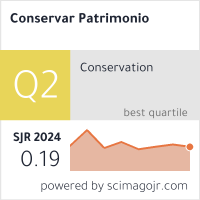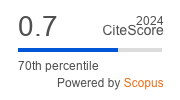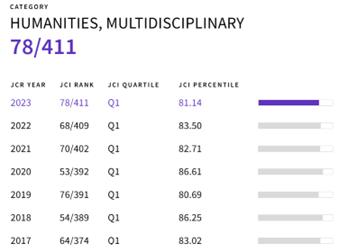Estabilização de argamassas de terra: uma revisão
DOI:
https://doi.org/10.14568/cp2019043Palavras-chave:
Ligantes, Minerais argilosos, Suscetibilidade à água, Estabilizantes, RebocosResumo
A terra como material de construção tem sido alvo de um renovado interesse por se enquadrar nas actuais preocupações ambientais e de eco eficiência. De facto, é um material ecológico e economicamente eficiente, revelando também propriedades de optimização do conforto no interior de edifícios. As argamassas de terra apresentam, no entanto, uma limitação: a sua susceptibilidade à água. Com o objectivo de viabilizar a sua utilização de forma mais abrangente, em ambientes interiores e exteriores onde possa existir contacto com água, tem vindo a ser estudada a inclusão de agentes estabilizantes. Neste artigo apresenta-se uma revisão crítica do efeito de estabilizantes mais comuns utilizados em argamassas de terra, nomeadamente: fibras vegetais; ligantes tais como sulfatos de cálcio, cais aéreas e cais com propriedades hidráulicas, cimento; e óleos. Verifica-se que alguns destes estabilizantes parecem melhorar a resistência da terra à água líquida. No entanto, na maior parte das vezes, essa melhoria ocorre em detrimento de outras propriedades importantes, que são também discutidas.
Downloads
Referências
[1] Çamurcuoğlu, D., ‘The Wall Paintings of Çatalhöyük (Turkey): Materials, Technologies and Artists’, dissertação de Doutoramento, Institute of Archaeology, University College London, London (2015).
[2] Rao, K., ‘Foreword’, in World Heritage Papers 36: Earthen Architecture in today’s world, ed. L. Eloundou, T. Joffroy, UNESCO, Paris (2013) 7-8.
[3] Gandreau, M. D.; Joffroy, M. T., ‘Inventaire 2012 des biens en terre du patrimoine mondial’, in World Heritage Papers 36: Earthen Architecture in today’s world, ed. L. Eloundou e T. Joffroy, UNESCO, Paris (2013) 228-231.
[4] Gomes, M. I.; Diaz Gonçalves, T.; Faria, P., ‘Hydric behaviour of earth materials and the effects of their stabilization with cement or lime: Study on repair mortars for historical rammed earth structures’, Journal of Materials in Civil Engineering 28 (7) (2016), https://doi.org/10.1061/%28ASCE%29MT.1943-5533.0001536.
[5] Jaquin, P., ‘History of earth building techniques’, in Modern Earth Buildings: Materials, engineering, construction and applications, ed. M. R. Hall, R. Lindsay e M. Krayenhoff, Woodhead Publishing, Cambridge (2012) 307-323, https://doi.org/10.1533/9780857096166.3.307.
[6] Gomes, M. I.; Faria, P.; Diaz Gonçalves, T., ‘Earth-based mortars for repair and protection of rammed earth walls. Stabilization with mineral binders and fibers’, Journal of Cleaner Production 172 (2018) 2401-2414, https://doi.org/10.1016/j.jclepro.2017.11.170.
[7] Lima, J.; Ferreira, M.; Faria, P., ‘Rebocos de terra: caracterização higroscópica e face à presença de água líquida’, in Actas do Congresso da Reabilitação do Património, ed. A. Costa, A. Velosa e A. Tavares, Universidade de Aveiro, Aveiro (2017) 21-29.
[8] Sousa, V.; Meireles, I.; Almeida, N.; Brito, J., ‘Construções em terra: Principais anomalias e mecanismos de degradação’, in 4º Encontro Internacional sobre Patologia e Reabilitação de Edifícios, Universidade de Aveiro, Aveiro (2008).
[9] Bergaya, F.; Lagaly, G., ‘General Introduction: Clays, Clay Minerals and Clay Science’, in Handbook of Clay Science. Developments in Clay Science, 2ª ed., ed. E. Bergaya e G. Lagaly, Elsevier, Amsterdam (2013) 1-19, https://doi.org/10.1016/B978-0-08-098258-8.00001-8.
[10] Reddi, L. N.; Jain, A.; KYun, H-B., ‘Soil materials for earth construction; properties, classification and suitability testing’, in Modern Earth Buildings: Materials, Engineering, Constructions and Applications, ed. M. R. Hall, R. Lindsay e M. Krayenhoff, Woodhead Publishing Limited, Cambridge (2012) 155-171, https://doi.org/10.1533/9780857096166.2.155.
[11] Brigatti, M. F.; Galán, E.; Theng, B. K. G., ‘Structure and Mineralogy of Clay Minerals’, in Handbook of Clay Science. Developments in Clay Science, 2ª ed., ed. E. Bergaya e G. Lagaly Elsevier, Amsterdam (2013) 21-81, https://doi.org/10.1016/B978-0-08-098258-8.00002-X.
[12] Schoonheydt, R. A.; Johnston, C. T.; Bergaya, F., ‘Clay minerals and their surfaces’, in Surface and Interface Chemistry of Clay Minerals. Developments in Clay Science, ed. R. Schoonheydt, C. T. Johnston e F. Bergaya, Elsevier, Amsterdam (2018) 1-21, https://doi.org/10.1016/B978-0-08-102432-4.00001-9.
[13] Dominguez, O. M., “Preservation and repair of rammed earth constructions” dissertação de Mestrado, Universidade do Minho (2015).
[14] Schoonheydt, R. A.; Johnston, C. T., ‘The surface properties of clay minerals’, in Layered mineral structures and their Application in Advanced Technologies, ed. M.F. Brigatti e A. Mottana, The Mineralogical Society of Great Britain and Ireland, Twickenham (2011) 337-373, https://doi.org/10.1180/EMUnotes.11.10.
[15] Schoonheydt, R. A.; Johnston, C. T., ‘Surface and interface chemistry of clay minerals’, in Handbook of Clay Science. Developments in Clay Science, 2ª ed., ed. E. Bergaya e G. Lagaly, Elsevier, Amsterdam (2013) 139-172, https://doi.org/10.1016/B978-0-08-098258-8.00005-5.
[16] Santos, T.; Nunes, L.; Faria, P., ‘Production of eco-efficient earth-based plasters: Influence of composition on physical performance and bio-susceptibility’, Journal of Cleaner Production 167 (2017) 55-67, https://doi.org/10.1016/j.jclepro.2017.08.131.
[17] Camões, A.; Eires, R.; Jalali, S., ‘Old materials and techniques to improve the durability of earth buildings’, in Actas da conferência Terra 2012, International Committee on Vernacular Architecture – International Council on Monuments and Sites (CIAV-ICOMOS) (2012) 1–14.
[18] Eires, R.; Camões, A.; Jalali, S., ‘Ancient materials and techniques to improve the earthen building durability’, Key Engineering Materials 634 (2015) 357-366, https://doi.org/10.4028/www.scientific.net/KEM.634.357.
[19] Eires, R.; Camões, A.; Jalali, S., ‘Enhancing water resistance of earthen buildings with quicklime and oil’, Journal of Cleaner Production 142 (2017) 3281-3292, https://doi.org/10.1016/j.jclepro.2016.10.141.
[20] Zhang, L.; Yang, L.; Petter Jelle, B.; Wang, Y.; Gustavsen, A., ‘Hygrothermal properties of compressed earthen bricks’, Construction and Building Materials 162 (2018) 576-586, https://doi.org/10.1016/j.conbuildmat.2017.11.163.
[21] Santos, T.; Faria, P.; Santos Silva, A., ‘Avaliação in situ do comportamento de rebocos exteriores de argamassas de terra com baixas adições de cais’, Conservar Património 26 (2017) 11-21, https://doi.org/10.14568/cp2016022.
[22] Gomes, M.I.; Faria. P.; Gonçalves, T.D., ‘Earth-based mortars for repair and protection of rammed earth walls. Stabilization with mineral binders and fibers’, Journal of Cleaner Production 172 (2018) 2401-2414, https://doi.org/10.1016/j.jclepro.2017.11.170.
[23] Lima, J.; Silva, S.; Faria, P., ‘Rebocos de terra: influência da adição de óleo de linhaça e comparação com rebocos convencionais’, in Atas do 1º Congresso de Ensaios e Experimentação em Engenharia Civil, RELACRE , Lisboa (2016).
[24] Di Sante, M.; Fratalocchi, E.; Mazzieri, F.; Pasqualini, E., ‘Time of reactions in a lime treated clayey soil and influence of curing conditions on its microstructure and behaviour’, Applied Clay Science 99 (2014) 100-109, https://doi.org/10.1016/j.clay.2014.06.018.
[25] Zak, P.; Ashour, T.; Korjenic, A.; Korjenic, S.; Wu, W., ‘The influence of natural reinforcement fibers, gypsum and cement on compressive strength of earth brick materials’, Construction and Building Materials 106 (2016) 179-188, https://doi.org/10.1016/j.conbuildmat.2015.12.031.
[26] Ashour, T.; Korjenic, A.; Korjenic, S.; Wu, W., ‘Thermal conductivity of unfired earth bricks reinforced by agricultural wastes with cement and gypsum’, Energy and Buildings 104 (2015) 139-146, https://doi.org/10.1016/j.enbuild.2015.07.016.
[27] Mattone, M.; Rescic, S.; Fratini, F.; Manganelli Del Fà, R., ‘Experimentation of earth-gypsum plasters for the conservation of earthen constructions’, International Journal of Architectural Heritage 11(6) (2017) 763-772, https://doi.org/10.1080/15583058.2017.1290850.
[28] Lima, J.; Correia, D.; Faria, P., ‘Rebocos de terra: influência da adição de gesso e da granulometria da areia’, in III Simpósio de Argamassas e Soluções Térmicas de Revestimento, ITeCons, Coimbra (2016).
[29] Mattone, M.; Bignamini, E., ‘Conservation of earthen construction: Earth-gypsum plasters’, in Rammed Earth Conservation, ed. C. Mileto, F. Vegas e V. Cristini, Taylor and Francis Group, London (2012) 687-692.
[30] Ma, C.; Chen, B.; Chen, L., ‘Effect of organic matter on strength development of self-compacting earth-based construction stabilized with cement-based composites’, Construction and Building Materials 123 (2016) 414-423, https://doi.org/10.1016/j.conbuildmat.2016.07.018.
[31] Lima, J.; Faria, P., ‘Earthen Plasters: The potential of the clayey soils of Barrocal region in Algarve’, in 40th IAHS World Congress on Housing – Sustainable Housing Construction, Funchal (2014).
[32] Faria, P.; Lima J., Rebocos de Terra, Argumentum, Lisboa (2018).
[33] Lima, J.; Faria P., ‘Eco-efficient earthen plasters: The influence of the addition of natural fibers’, in Natural Fibers: Advances in Science and Technology Towards Industrial Applications, ed. R. Fangueiro e S. Rana, RILEM Book Series, Vol. 12, Springer, Basingstoke (2016) 315-330.
[34] Varas, M. J.; Alvarez de Buergo, M.; Fort, R., ‘Natural cement as the precursor of Portland cement: Methodology for its identification’, Cement and Concrete Research 35 (2005) 2055-2065, https://doi.org/10.1016/j.cemconres.2004.10.045.
[35] van Oss, H. G.; Padovani, A. C., ‘Cement manufacture and the environment – Part 1: Chemistry and technology’, Journal of Industrial Ecology 6(1) (2002) 89-105, https://doi.org/10.1162/108819802320971650.
[36] EN 459-1. 2015. Building lime – Part 1: Definitions, specifications and conformity criteria. CEN, Brussels.

Downloads
Publicado
Como Citar
Licença
O presente trabalho é distribuído nos termos da Licença Creative Commons (CC BY-NC 4.0) que permite a utilização, partilha e reprodução para fins não comerciais e sem modificações, desde que o autor e fonte original sejam citados.
O Copyright permanece com os autores.






